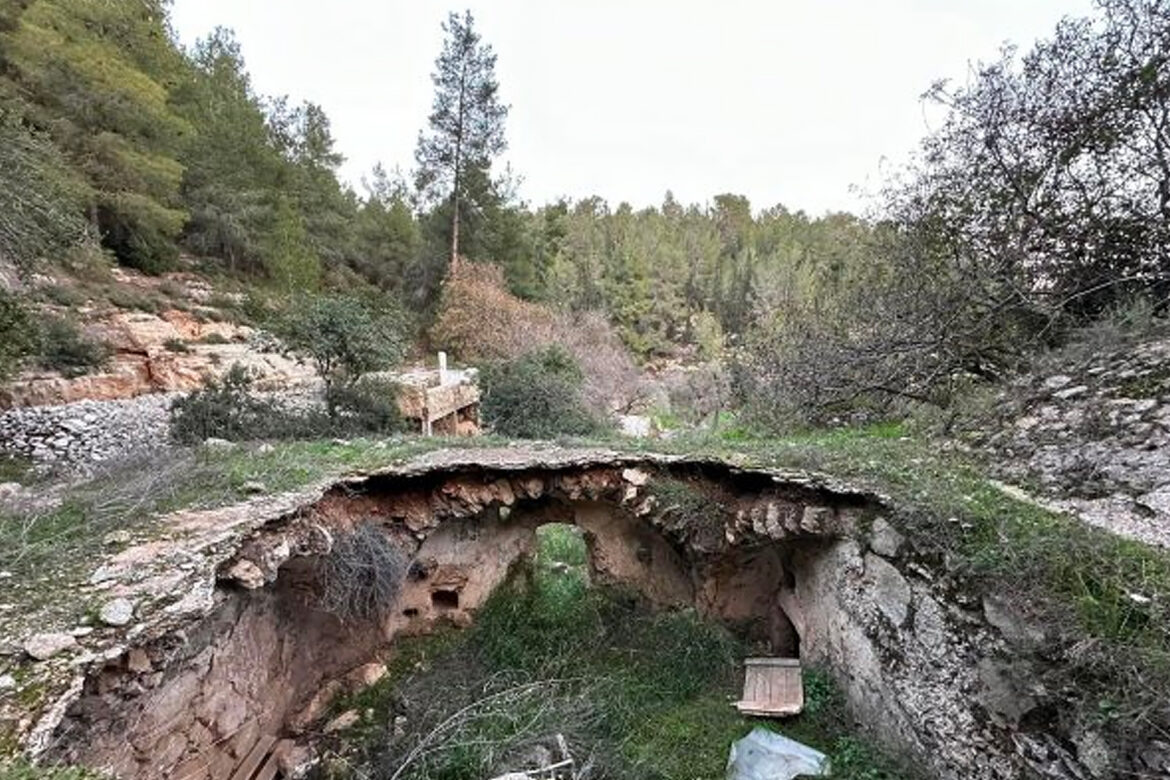A Palestinian village displaced since the 1948 war. It was located on a mountain 11 kilometers west of the city of Jerusalem. The Israeli occupation forces seized its lands and expelled its remaining residents.
Khirbet al-Lawz was occupied by soldiers from the “Harel” Brigade, which was tasked with occupying some villages in Jerusalem. The occupation of Khirbet al-Lawz took place on July 13-14, 1948, in an operation known as “Dani.”
the site
Khirbet al-Lawz is located 11 kilometers west of Jerusalem. It rises 245 meters above a valley located to the south of it, and its average height is 750 meters above sea level.
The village is located to the south of a mountain peak overlooking a wide area to the south, east and west. There is a secondary road linking Khirbet al-Lawz to the village of Ein Karem (and then to Jerusalem) to the east.
It is surrounded by several Palestinian villages, including: to the north the villages of Sataf and Deir Amr, to the south-west the village of Aqour, to the south-west the village of Al-Walaja, to the south and south-east the village of Al-Joura, and to the north-east the village of Sataf (Sattaf). It is connected to the neighboring villages by paved paths, the most important of which is the road. Connecting to Ein Karem and connecting to Jerusalem.
Population
The population of the village was estimated at 315 people in 1931, all of them Muslims, including 159 males and 156 females. In 1945, its population was estimated at 450 people, most of whom were Arab Muslims. In the year of the Nakba (1948), the population reached 522 people.
the date
Several oral narratives say that the name Khirbet al-Lawz is hereditary, and that it has accompanied the village since the middle of the 16th century. It was stated in documents of the Ottoman Empire (such as detailed notebooks) that Khirbet al-Lawz was the name by which the village was known since the middle of the 16th century AD.
Economy
The village’s economy was primarily based on agriculture, as its residents were famous for growing vines, olive and almond trees, vegetables, and grains. Wild plants grew on the slopes and were used as pasture for livestock.
In the years 1944 and 1945, a total of 693 dunums of the village’s land were allocated to grain, and 728 dunums were irrigated or used for orchards, of which olive fields occupied about 186 dunums.
In addition to agriculture, the people of Khirbet al-Lawz village worked in raising livestock, sheep, and cows, and cows and horses were used for plowing.
In 1945 AD, the village’s land area amounted to about 4,502 dunams, all of which belonged to its people, and not a single inch of it was leaked to the Jews.

Village landmarks
The village was an archaeological site that included graves, building ruins, a millstone, and other material evidence indicating that it had been inhabited in the past. It also contained a shrine for a local religious figure, Sheikh Salama.
Occupation and displacement of its population
The village of Al-Luz was mentioned in the context of Operation “Dani”, where the Harel Brigade in the Israeli army was assigned the task of occupying some villages that would expand the corridor leading to Jerusalem, which was under the control of Zionist organizations.
Khirbet al-Lawz was occupied on July 13-14, 1948. The many refugees who remained in the area, or tried to return to it during the transitional period, were forced to leave, and all the villagers were displaced to neighboring villages.
Israeli historian Benny Morris narrates that one of the factions of the Harel Brigade, near the village, blocked the path of dozens of refugees who were heading west, in November 1948.
Al-Lawz village after displacement
Only rubble of stones and scattered terraces remain of the village, and a dense forest of cypress and fir trees has been planted around the village site. To the south of the site, within the forest, there is a well surrounded by almond and fig trees. The forest was established in memory of Israeli General Moshe Dayan.



 Ivory Coast – Nigeria live: the Elephants want to confirm at home
Ivory Coast – Nigeria live: the Elephants want to confirm at home 